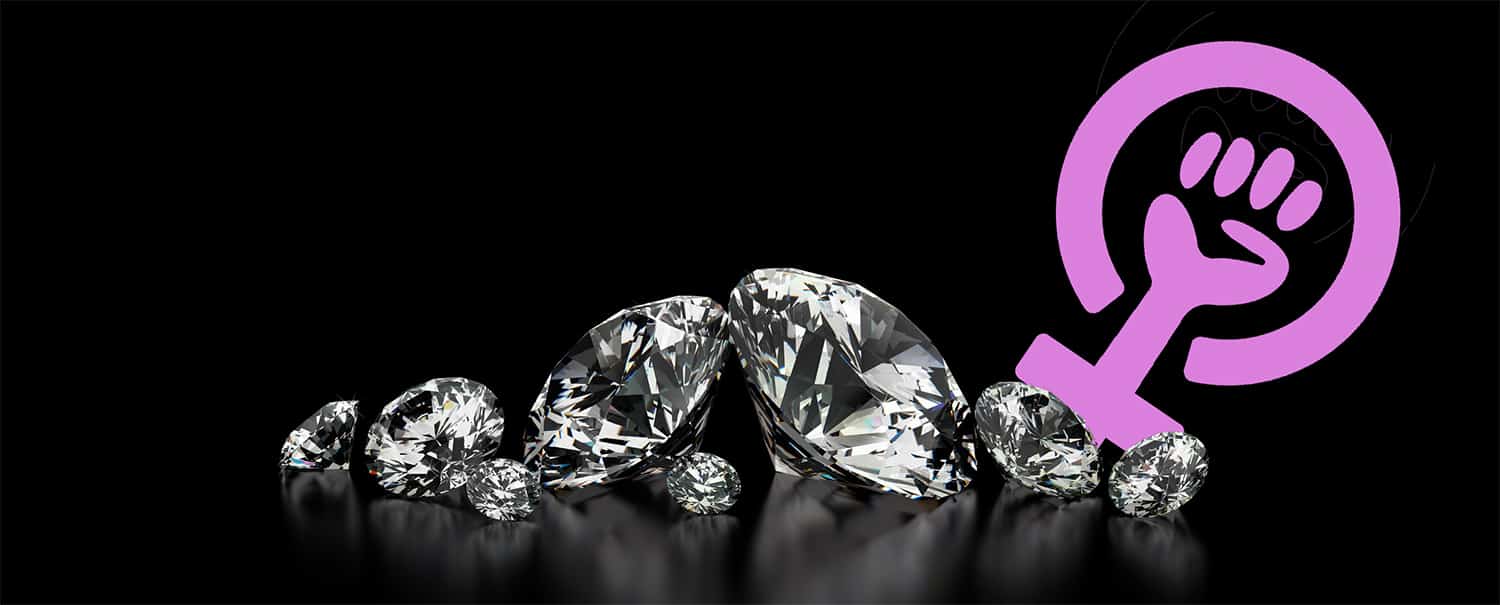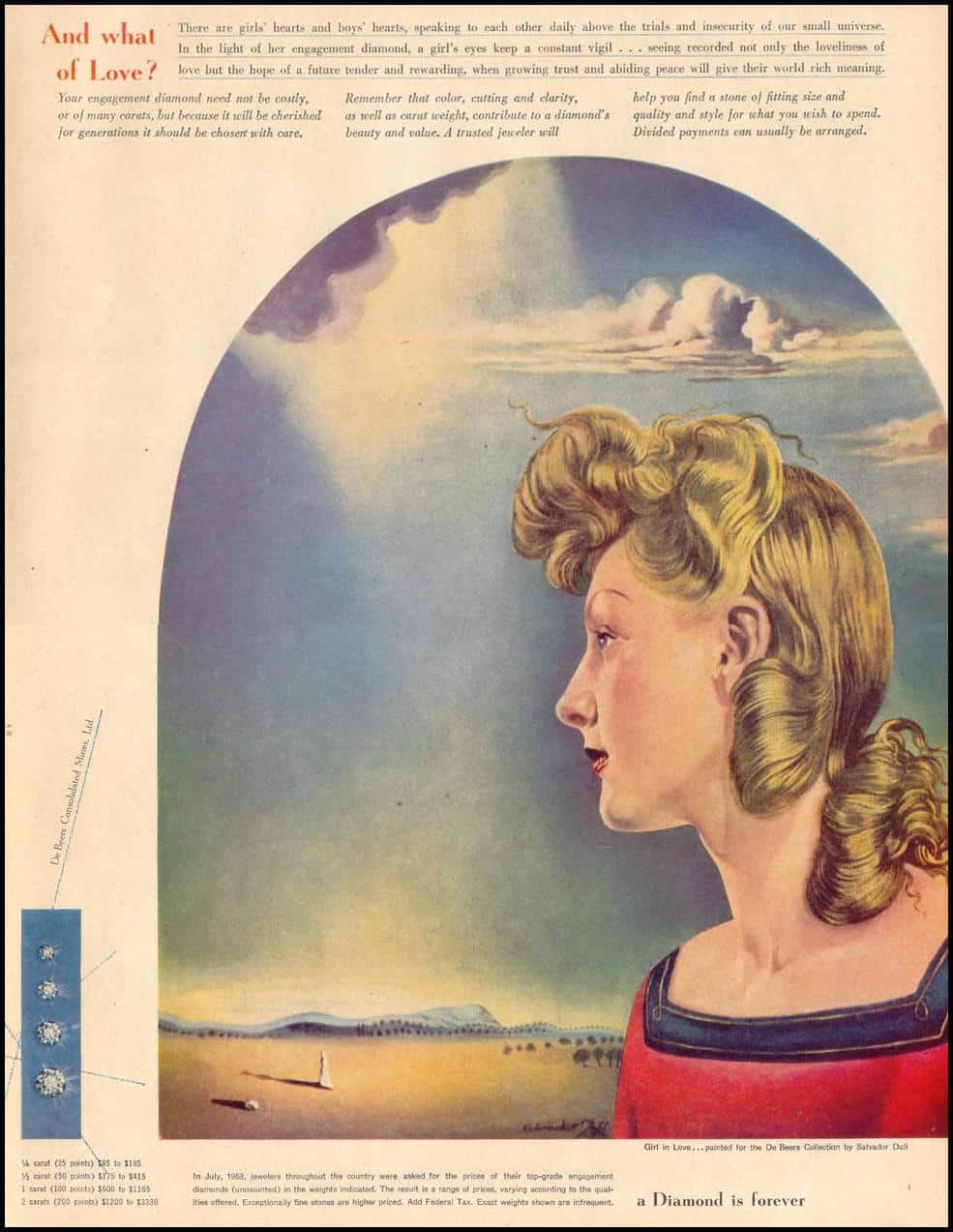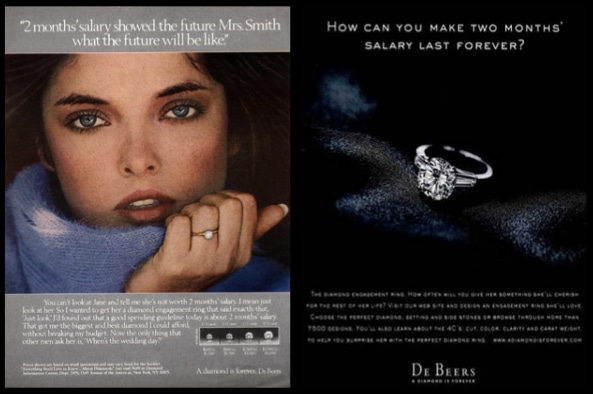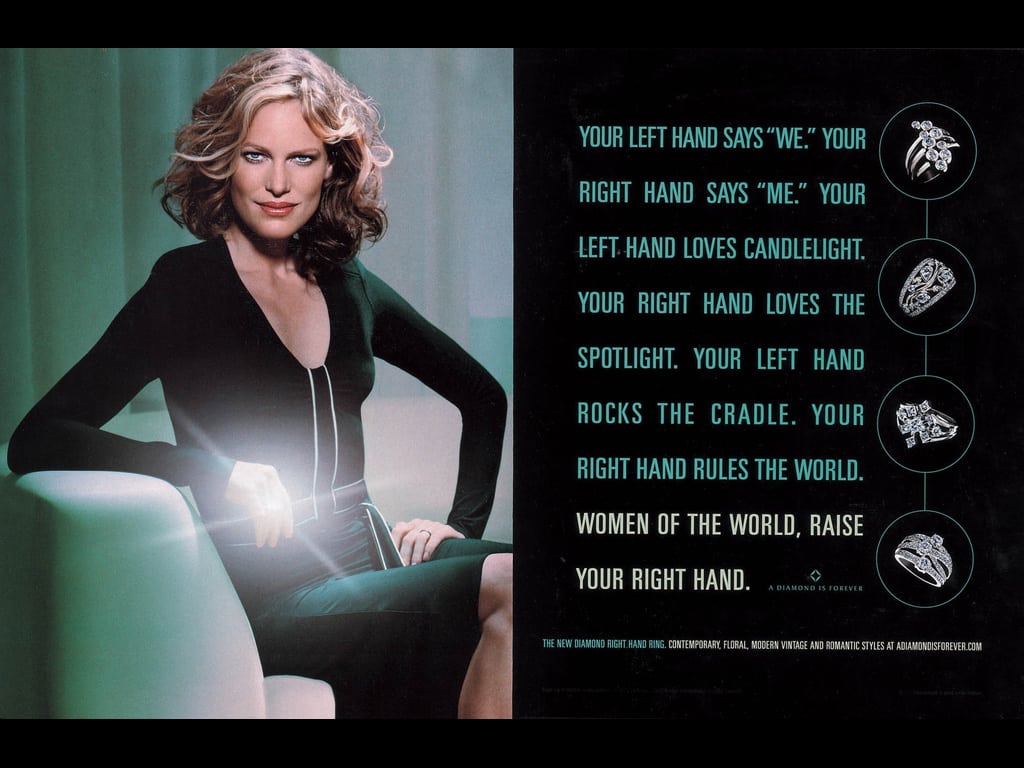STRATEGIES REQUIRED FOR EMPOWERED WOMEN’S MARKET
The De Beers report concluded by considering the significance of the changing character of female consumers for companies marketing diamonds. “For decades, diamonds have been marketed almost exclusively as gifts of love and symbols of marriage,” it stated. “While this universal and powerful motivation will remain the bedrock of the industry, new opportunities are clearly emerging as the position of women in society and the economy evolves.”
Female self-purchasers are becoming a prime target for diamond marketers, knowledgeable that they are likely married, over the age of 35 and have medium to high levels of income. Approaches will need to differ from country to country, the report said, but jewelry retailers who are able to elicit impulse buying through design, price or emotionally-driven sales pitches are likely to enjoy success.
Second, stated the report, jewelry retailers will have a wider selection of “life “moments,” for women to celebrate with diamond purchases. These could include unexpected windfalls, new jobs, promotions and bonuses, and simply buying on impulse because they have the cash to do so.
Third, whereas diamonds traditionally have been associated with love and commitment, the changing consumer profile means that it can come to symbolize a broader spectrum of emotions, such as optimism and pride.





